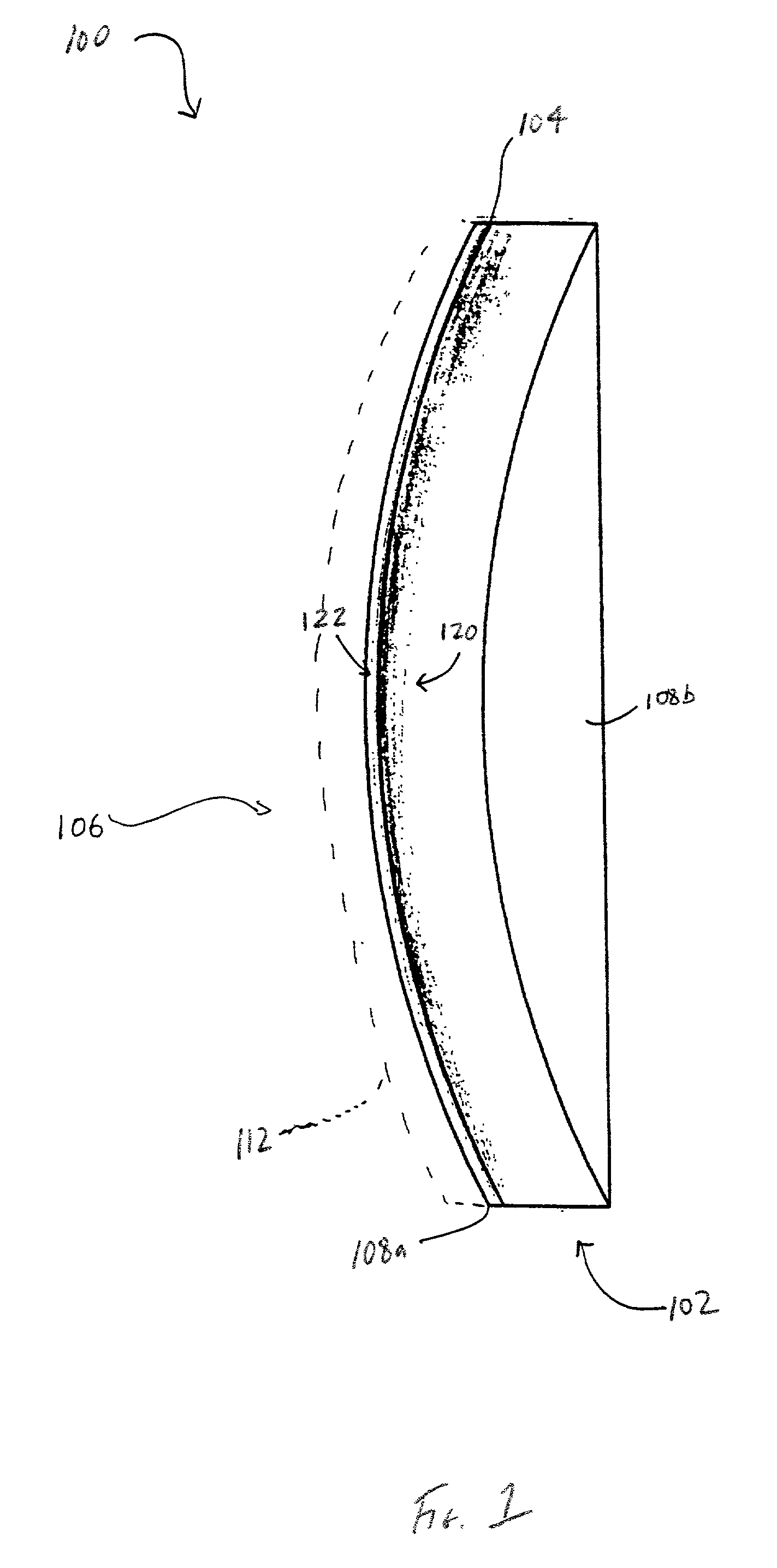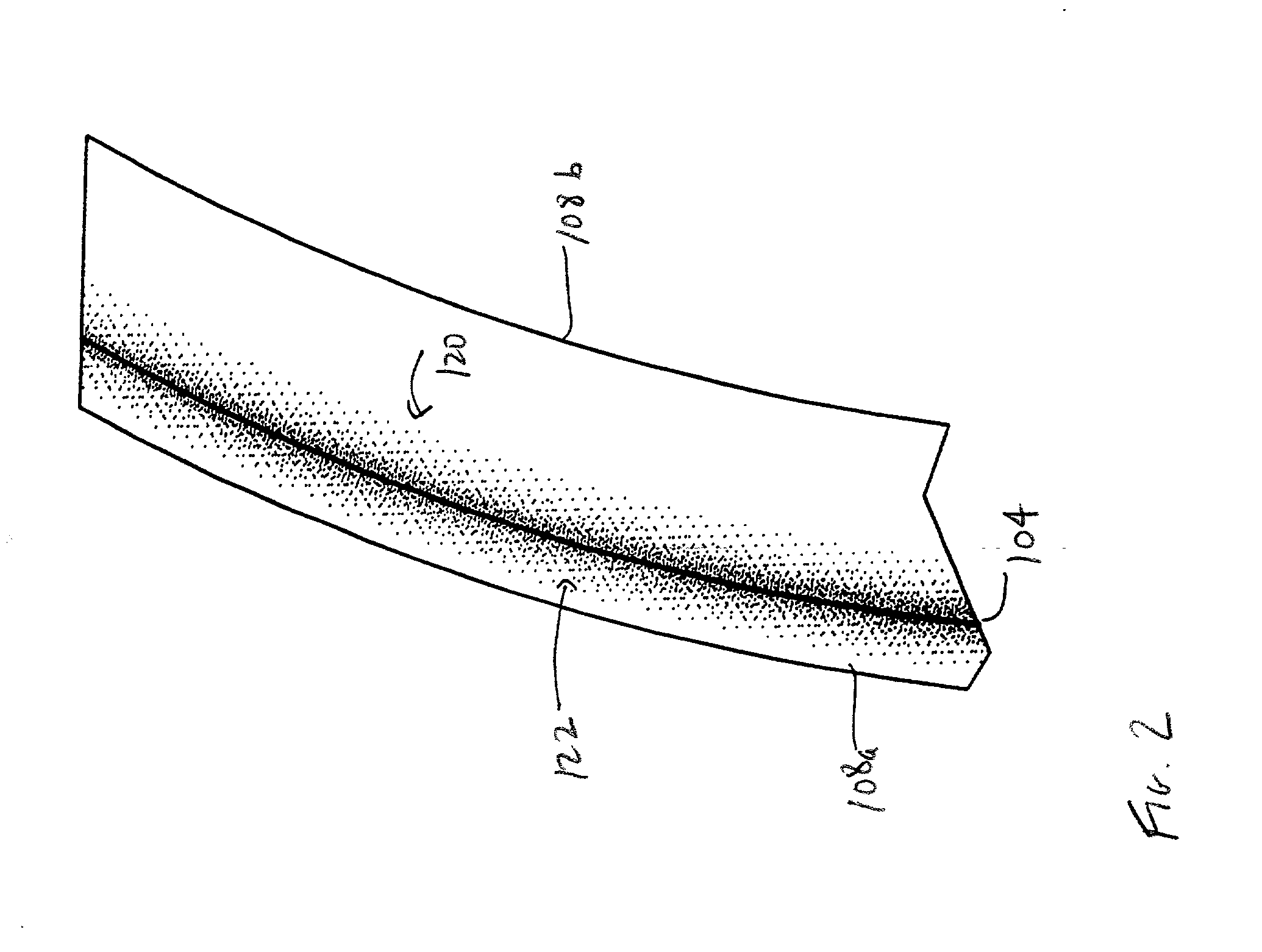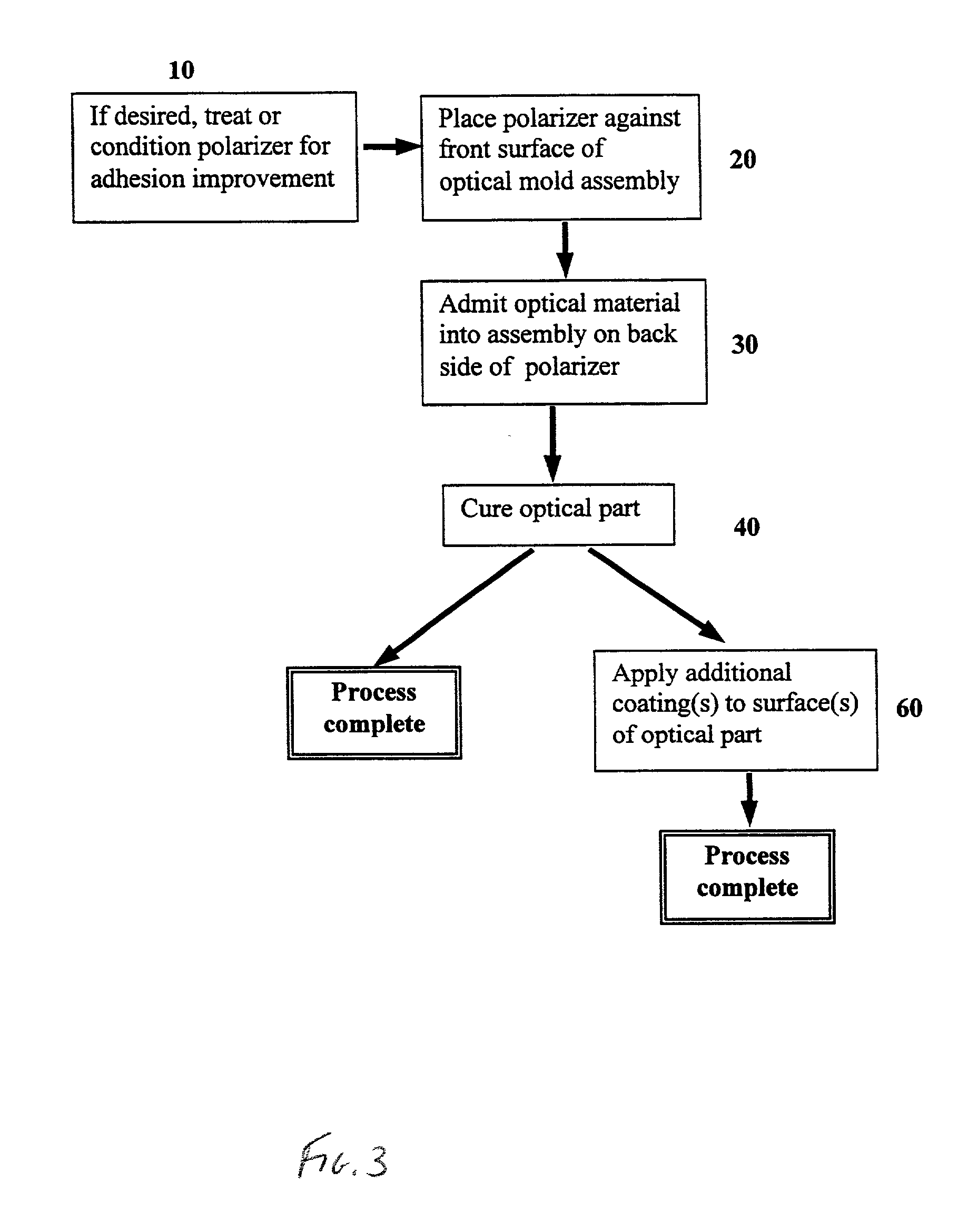Polarized eyewear using high impact, high optical-quality polymeric material
a polymer material and high optical quality technology, applied in the field of optical quality polarized parts, can solve the problems of reducing the impact resistance of the lens, so as to improve the impact resistance, high impact, and high optical quality
- Summary
- Abstract
- Description
- Claims
- Application Information
AI Technical Summary
Benefits of technology
Problems solved by technology
Method used
Image
Examples
example 1
[0078] A conventional thermoset mold cavity was assembled with a PVA polarizer film mounted within the lens cavity. High impact polyurethane-based material was introduced into the cavity and allowed to flow around the polarizer. The lens was allowed to solidify at room temperature for a duration less than 10 minutes (until mixture gels). The lens was allowed to continue its reactive cure at 121 C for 16 hours.
1 RESULTS: Polarizer type Displacement of polarizer? Adhesion a. PVA polarizer film, Yes-unacceptable treated for adhesion
example 2
[0079] This example is representative of the manufacturing method illustrated in FIG. 3. A thermoset mold cavity was assembled with the polarizer resting against the front mold surface. Using a sidefill gasket design as disclosed in U.S. application Ser. No. 09 / 447,445, wherein the gasket has vent holes in addition to a filling port, liquid-phase polyurethane-based material was admitted to only the region of the assembly behind the polarizer film. The lens was allowed to solidify at room temperature for a duration less than 10 minutes (until mixture gels). The lens was placed in an oven to continue its reactive cure at 121.degree. C. for 16 hours.
2 RESULTS: Displacement Polarizer type of polarizer? Adhesion a. PET polarizer film UV No Delaminated with edge treated on back surface only pressure b. PET polarizer, untreated No Poorer adhesion than a. c. PC / PVA / PC wafer No Yes-PASSED TEST
example 3
[0080] This example is representative of the manufacturing method illustrated in FIG. 4. A thermoset mold cavity was assembled with a polarizing layer using a sidefill gasket design as disclosed in U.S. patent application Ser. No. 09 / 447,445. Specifically, a slot-shaped port hole acted as the fill port to introduce, in a controlled manner, the thermosetting resin material along the edge axis of the embedded layer. Two port holes functioning as vent holes were located above the edge axis of the embedded material, i.e., on the thinner side of the lens to allow egress of any gases from the front surface of the lens. An additional vent port was located below the edge axis of the embedded material on the thicker side of the lens to allow egress of any gases from the back lens surface. A curved fill nozzle designed to match the slot-shaped fill port was used to introduce material into the cavity around the polarizing layer until the cavity was full and a small amount of material flowed ou...
PUM
| Property | Measurement | Unit |
|---|---|---|
| Linear density | aaaaa | aaaaa |
| Ratio | aaaaa | aaaaa |
| Optical properties | aaaaa | aaaaa |
Abstract
Description
Claims
Application Information
 Login to View More
Login to View More - R&D
- Intellectual Property
- Life Sciences
- Materials
- Tech Scout
- Unparalleled Data Quality
- Higher Quality Content
- 60% Fewer Hallucinations
Browse by: Latest US Patents, China's latest patents, Technical Efficacy Thesaurus, Application Domain, Technology Topic, Popular Technical Reports.
© 2025 PatSnap. All rights reserved.Legal|Privacy policy|Modern Slavery Act Transparency Statement|Sitemap|About US| Contact US: help@patsnap.com



